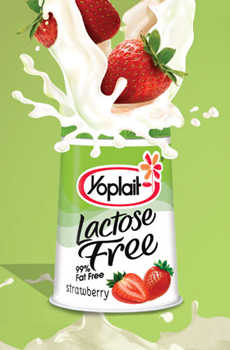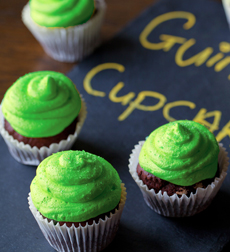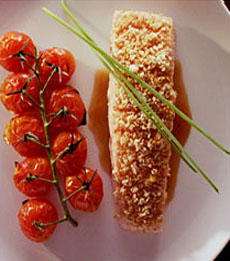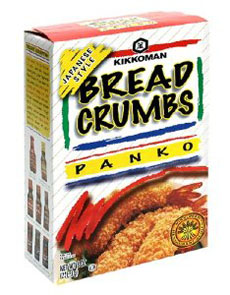|
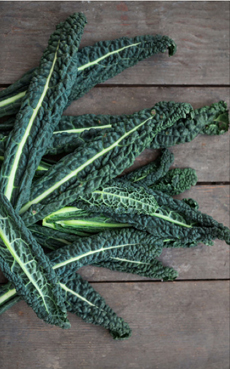
[1] Lacinato kale is also called black Tuscanand dinosaur kale (photo © Good Eggs).

[2] Sundried tomatoes are combined with kale in the recipe below (photo © Bella Sun Luci).
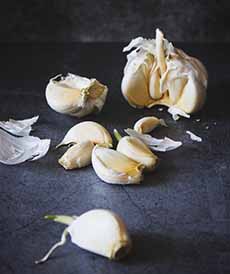
[3] Don’t forget the garlic (photo © TijanaDrndaski | Unsplash).
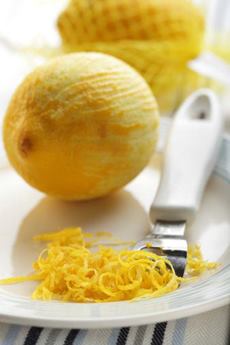
[4] Lemon zest perks up the recipe (photo © Sunkist).
|
|
A few weeks ago, our Top Pick Of The Week was kale chips from Rhythm Superfoods. We also included a recipe for making kale chips at home.
Dark, leafy kale is one of the most highly nutritious vegetables, with powerful antioxidant and anti-inflammatory properties. It is part of the Brassicaceae botanical family, the group of cruciferous cancer-fighters that also includes bok choy, broccoli, Brussels sprouts, cabbage, cauliflower, collards, horseradish, kohlrabi, mustard greens and radishes.
Kale is a descendent of wild cabbage, native to Europe and Asia Minor. It has been cultivated since around 2000 B.C.E.
Until the end of the Middle Ages, kale was one of the most common green vegetables in Europe. It was introduced to Canada by Russian traders, and then to the U.S., in the 19th century [source: Wikipedia].
Because kale is so prolific and easy to grow, during World War II in England, citizens were encouraged to grow it in their victory gardens.
In the U.S. in the same century, kale was known only in its ornamental version, as a garden plant.
In 2007, food writer Melissa Clark sparked the American raw kale salad trend among foodies and health-conscious eaters after eating a kale salad at a Brooklyn restaurant [source].
Although it’s flavorful and good for us, Americans don’t eat much kale. It’s available year-round, so try it. It just may become a family favorite.
National Kale Day is the third Wednesday in October.
A recipe for Garlic Braised Kale & Sundried Tomatoes is below.
HOW TO BUY, STORE & USE KALE
Look for kale with firm, deeply colored leaves and moist stems. To store, wrap the leaves in a damp paper towel (don’t wash before storing), tuck it into a plastic bag and place it in your refrigerator’s crisper.
Add tender kale leaves to green salads.
Use it to add a garden freshness to hearty soups and stews.
Whip up a batch of white bean soup with kale.
Add cooked kale to pasta; serve it as a side with chicken.
Mix it with roasted or mashed potatoes.
One of the easiest ways to serve leafy, hearty green vegetables like kale is to quickly sauté them with some garlic. Start with this recipe from Melissa’s (which sells organic kale).
RECIPE: GARLIC-BRAISED KALE & SUNDRIED TOMATOES
Ingredients
Extra virgin olive oil
6 cloves garlic, thinly sliced
1 red onion, diced
Sea salt to taste
Pinch pico de gallo seasoning†
3 tablespoons sliced sundried tomatoes (if in oil, drain well)
1 medium bunch kale, diced, stems removed (reserve for other use)
Zest from one lemon
1/2 cup water
2 tablespoons rice wine vinegar
1 teaspoon balsamic vinegar
1/2 cup hazelnuts, lightly toasted and coarsely chopped
Preparation
1. Place a small amount of oil, garlic and onion in a deep skillet or wok and turn heat to medium. When the onions begin to sizzle, add a generous pinch of salt and pico de gallo seasoning, and sauté for about 2 minutes.
2. Stir in sundried tomatoes. Stir diced kale into skillet with lemon zest. Season to taste with salt and sauté for 2 minutes.
3. Add water and rice wine vinegar, cover and reduce heat to low. Cook until kale is quite wilted and a deep green, about 8 minutes.
4. Remove from heat and stir in vinegar. Transfer to a serving plate and garnish with hazelnuts.
Find more of our favorite vegetable recipes by pulling down the menu in the right column.
___________
†This is a blend of chile peppers and salt. You can substitute red pepper flakes and adjust the salt to taste.
|

